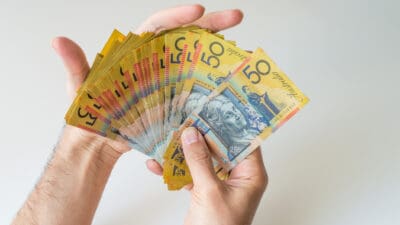Inflation is now the word of the day. Today, Australian CPI was printed at 5.1% for the three months until 31 March 2022.
It doesn't appear the market has taken the news very well. The benchmark S&P/ASX 200 Index (ASX: XJO) is down 63 basis points at the time of writing.
As commodity markets continue to boom and food prices look set for a green period, market pundits are positioning to avoid the fallout of rising inflation.
What shares do well in inflationary periods?
Inflation can be a real pain to investors. Especially at the retail end because it has a direct impact on investment returns.
Returns are measured in nominal and real terms, with the latter accounting to adjust for inflation. Put simply, inflation eats into real savings and investment gains by reducing purchasing power.
"Inflation poses a threat to investors because it chips away at real savings and investment returns," according to analysis from fixed-income giant Pimco.
Most investors aim to increase their long-term purchasing power. Inflation puts this goal at risk because investment returns must first keep up with the rate of inflation in order to increase real purchasing power.
For example, an investment that returns 2 per cent before inflation in an environment of 3 per cent inflation will produce a negative return (-1 per cent) when adjusted for inflation.
Going to the archives, research analysts at JP Morgan have uncovered some interesting findings.
Curiously, investigations by the broker reveal that materials, industrials and financials sectors each demonstrate strength when consumer expectations of inflation rise. Whilst more growth-type assets flounder.
"Cyclical sectors such as financials, industrials, materials and energy, tend to outperform the global benchmark in periods of rising inflation expectations," the broker wrote.
By contrast, defensives and growth stocks tend to struggle. Technology is the sector that looks most vulnerable today, given their valuations have likely benefitted from the low interest rates and flat yield curves over the past couple of years.
Pimco suggests the same, noting that "[m]any commodity-based assets, such as commodity indexes, can help cushion a portfolio against inflation because their total returns usually rise in an inflationary environment."
What instruments are out there?
Along those lines, the BetaShares Global Energy Companies ETF (ASX: FUEL) offers investors diversified exposure to the energy sector. Meanwhile, the BetaShares Global Banks ETF (ASX: BNKS) lends the same, albeit in financials.
For global 'inflation-protected' exposure, the Fidelity Stocks for Inflation ETF (BATS: FCPI) might pique investor interest. It's an index fund that tracks the Fidelity Stocks for Inflation Factor Index.
[The] Fidelity Stocks for Inflation Factor Index is designed to reflect the performance of stocks of large- and mid-capitalization U.S. companies with attractive valuations, high quality profiles, and positive momentum signals, with structural tilts to sectors that tend to outperform in inflationary environments.
Some of the top holdings include Apple Inc (NASDAQ: AAPL), Microsoft Corporation (NASDAQ: MSFT) and Marathon Oil Corporation (NYSE: MRO).
As the investment landscape keeps evolving, it appears these baskets are poised to perform amid the inflationary pressures. But only time will tell.









